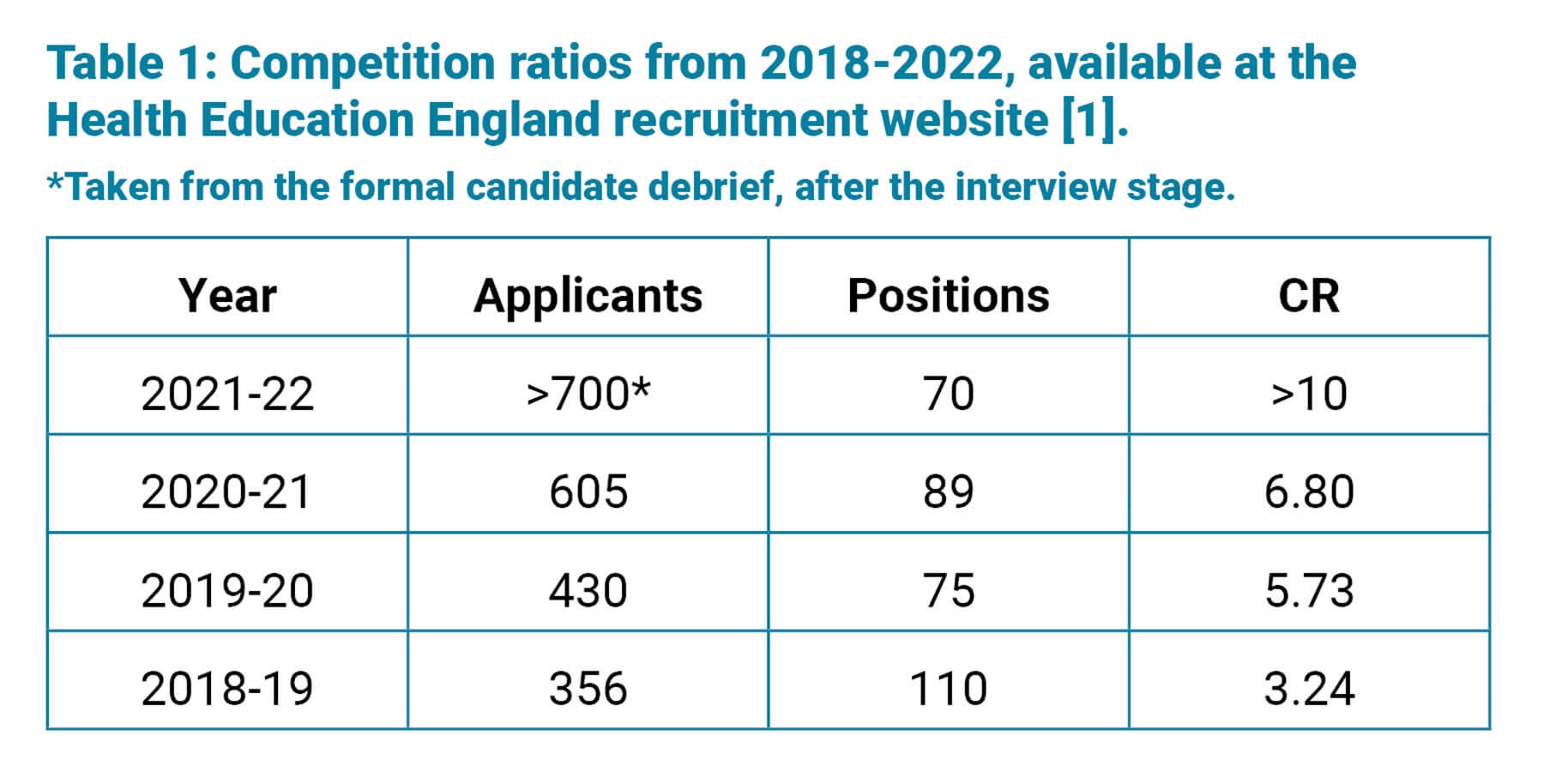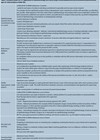Harry Rosen updates us on what is involved in the current UK Ophthalmology Specialist Training (OST) programme application process.
The process of applying to the UK Ophthalmology Specialist Training (OST) programme is constantly changing each year, adapting to the needs of rapidly increasing demand, and living with COVID-19. The 2021-22 cycle was no different, attracting a record number of applicants. Despite the minutiae bearing extreme similarity to 2020-21, the purpose of this article is to review the most recent recruitment cycle, for the benefit of those looking to apply in the year ahead.
This article is not a guide or advice on how to be successful in an application, but hopefully provides an up-to-date orientation of the process and offers unique insights from a candidate who applied in this year’s cycle.
Facts and figures
This year was the most competitive on record, with over 700 applicants for 70 training numbers. With some simple arithmetic, that works out as a competition ratio (CR) of >10:1 applicants per place; competition ratios from previous years are compared in Table 1. One third of applicants were invited to interview, cutting the CR at this stage to around 3:1. For factors yet unknown, appeal towards OST continues to grow. Although prospective applicants should by no means be dissuaded by this, it’s clear that competition is rising and applicants should try to start preparing early.
The distribution of marks for entry to OST remains the same as the 2020-21 system. The portfolio accounts for 50%, and the bulk of the marks available. Multi-Specialty Recruitment Assessment (MSRA) marks are adjusted to give a score out of 20%. The interview makes up the final 30%, giving a final total mark or percentage out of 100, upon which one’s entire application is based.
MSRA
The MSRA is an online, driving theory / UKCAT-esque exam, sat at any local Pearson centre. Initially designed as an assessment tool for GP training selection, it tests both generalised medical knowledge and situational judgement in clinical environments. As well as being a significant and undervalued component of the applicant score, it is also the sole requirement for an invite to interview. As reported in communications to the most recent cohort of candidates, the minimum threshold for an invite to interview in 2022 was 519, with a distribution which ranged as high as 647 in OST candidates. Therefore, only one-third of applicants achieved a score of 519 or above. Scores ranging from 519-647 were then adjusted to give a score from 0-20 to be added to the applicant final score. As an anecdotal example, scores of ~570 were given ~10/20 for the final MSRA mark.

The Severn Deanery offers guidance on score outcomes, a “good” score ranging from 462-580 and >580 being “very good” [2]. These data clearly indicate that the overall standard this year was very high and is more competitive than other specialties using the MSRA [3,4]. Useful guidance on preparing for the MSRA can be found online [5].
Portfolio
The mark scheme for the portfolio remained very similar to 2020-21, offering 50 marks for a broad range of generalised skills and achievements for a medical professional. The mark scheme is highly prescriptive, detailed and freely available on the Severn Deanery website [6].
Applicants were repeatedly reminded via email communications that any piece of evidence can only be given marks under a single portfolio heading. Failing this would result in only gaining marks in one section (likely the first chronologically) whilst also likely losing a mark in the “Overall portfolio layout & quality” section. For those planning their 2022-23 portfolios, this is an important point to note, to facilitate planning or acquiring points elsewhere if expecting to rely on a piece of evidence twice e.g., a prize for an audit presentation, used again in the audit section.
Although the portfolio section offers a substantial 50% of the final score, many of the marks are achieved in your routine course of being a foundation doctor. Doing very well or poorly in the other 50% (interview and MSRA) however, which require far less forward planning, can mean the difference between ranking highly or being unappointable altogether. Having an average portfolio shouldn’t dissuade you from applying, if ophthalmology is what you want to do. Numerous online articles have offered advice on how to tackle the OST portfolio [7,8].
Interview
Interviews were also very similar to 2020-21, all of which were conducted via Microsoft Teams on the same day for all candidates. Likewise, the interview again comprised of a single patient consultation station, involving a short briefing to read, followed by a seven-minute role play with an actress / actor. Interview slots were assigned on a first-come first-served basis. There were no big surprises, and the actresses / actors were not intent on catching you out. As with any medical role play, make sure you are familiar with the generic principles and be ready to be assessed on your clinical knowledge and communication skills. Online platforms such as on Meddibuddy.co.uk have recently published guidance on interview preparation [9].
After the interview had taken place, there was a group candidate online debriefing delivered by one of the consultant assessors from the recruitment team. This was an opportunity for the assessors to thank and congratulate candidates for getting this far, and for the somewhat relieved candidates to ask any questions or give feedback in a calm, open forum.
Offers
One hundred and seventeen candidates were deemed to be “appointable”, meaning they surpassed an agreed minimum score for each component (MSRA, Interview, Portfolio) and overall. Based on anecdotal discussions with colleagues who had also applied, many applicants received offers for training numbers despite not being ranked 70th or less. Secondly, it appeared that a total score of ~70 was a reasonable benchmark for getting a London OST number for this year.
So, what’s new?
Not much! Save for the even greater peer competition, each component of the applicant score and the delivery of interviews was remarkably similar to the 2020-21 recruitment round, although markedly different to pre-COVID times.
Conclusions
The 2021-22 OST selection cycle was the most competitive to date, and its current trajectory indicates that this has no sign of changing. The mark scheme for applications remained almost identical to the year before, and the details of how to achieve these marks were prescriptive and freely available. Despite the popularity of OST, it remains one of the only highly competitive specialty programmes that does not penalise extra “years since graduation” unlike various surgical ST1 / ST3 applications (so long as you don’t exceed the maximum 18 months experience in ophthalmology itself). This should be reassuring to prospective applicants, that the marks are achievable with preparation and planning and that there is no true urgency to acquire the relevant marks.Overall, the application process was very transparent and smoothly run, with clear effort on behalf of the recruitment team to simplify the process and help reduce candidate stress. Hopefully this article puts the process in perspective and provides a foundation for those hoping to apply for the coming year of 2022-2023.
KEY FACTS
-
2022 Competition Ratio ~10:1 and 3:1 at interview.
-
Score breakdown 50% evidence folder, 20% MSRA and 30% interview.
-
MSRA scores ranged from 519-647.
-
Interview and Evidence folders remain the same as 2020-21.
-
Seventy training numbers available.
References:
1. Specialty Training > Competition Ratios.
https://specialtytraining.hee.
nhs.uk/Competition-Ratios
2. MSRA - Scoring guidance - Severn PGME.
https://severndeanery.nhs.uk/recruitment/
vacancies/show/oph-st1-2022/
msra-guidance-to-the-rating‑lib
3. Applicant Guidance General Practice: Multi-Specialty Recruitment Assessment (MSRA) 2021-22.
4. ST1 Obstetrics & Gynaecology Recruitment and Selection Process.
5. A guide to the Multi-Speciality Recruitment Assessment (MSRA) exam. Eye News.
https://www.eyenews.uk.com/features/
ophthalmology/post/a-guide-to-the-multi
-speciality-recruitment-assessment-msra-exam
6. Current Vacancies. Severn PGME.
https://severndeanery.nhs.uk/recruitment/
vacancies/show/oph-st1-2022
7. Ophthalmology ST1 Interview Portfolio Preparation. Medibuddy.
https://medibuddy.co.uk/ophthalmology/
interview-portfolio-preparation/
8. How to nearly (but not quite) get into ST1 ophthalmology training – some reflections. Eye News.
https://www.eyenews.uk.com/education/
top-tips/post/how-to-nearly-but-not-quite-get-into
-st1-ophthalmology-training-some-reflections
9. Ophthalmology ST1 Interview Preparation and Essential Reading. Medibuddy.
https://medibuddy.co.uk/ophthalmology/
ophthalmology-st1-interview-preparation
-and-essential-reading/
[All links last accessed June 2022].
Declaration of competing interests: None declared.
COMMENTS ARE WELCOME







